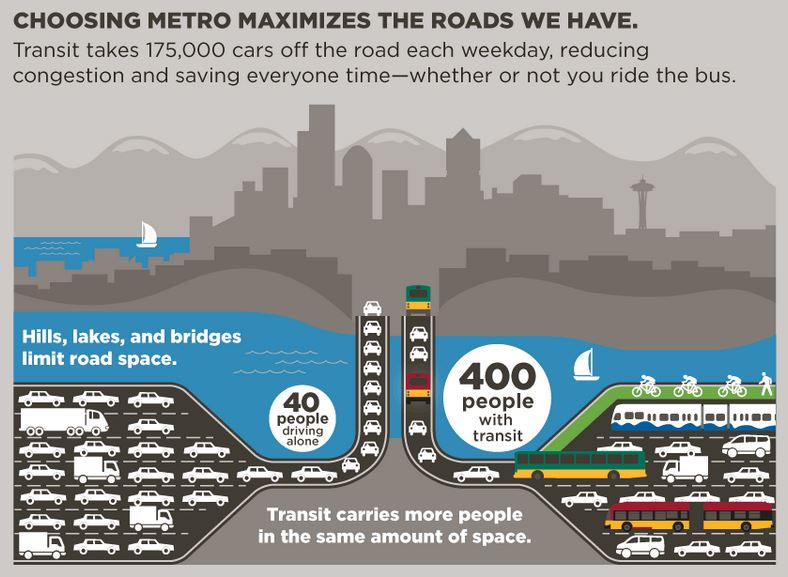![]()
The public transit agency in King County, Wash., was facing a budget shortfall in 2014 that meant significant cuts to local bus routes were likely on the way. In January of that year, regional leaders announced a plan to prevent bus cuts through a ballot measure that, if approved by voters, would raise an estimated $130 million a year.
The press conference announcing this plan generated more than 100 comments and rewteets, and the hashtag for #kcmetrocuts was Seattle’s top trending term on Twitter that day. For months, people had shown tremendous support for transit in the face of potential budget cuts. Those metrics were yet another indication of public support, right?
Not so fast. There was more to this story than simple numbers.
Don’t be a ‘like’ counter
Anyone can count Facebook likes and Twitter mentions—that’s the easy part. But how are those metrics relevant to your work? How do you connect social media to bigger goals?
Surprisingly, counting likes, retweets, fans and followers is as deep as some organizations go with their social media reporting. That’s a missed opportunity. The insights that can be gleaned from understanding social media sentiment can profoundly enhance or change the way you communicate about certain issues.
In our case, reading through the social media posts that our press conference sparked taught us something important: the proposed tax increase was not popular. In fact, the immediate reaction was roughly 80-20 against. That was a significant change from what we had been seeing. Ultimately, the ballot measure failed later that spring.
Make social media ROI work for you
Social media strategist Olivier Blanchard writes in his book Social Media ROI that your business doesn’t plug into social media; social media plugs into your business. Some of the best uses for social media are in support of everyday objectives.
Analytics and ROI aren’t just about numbers—it’s about measuring your success. Analysis, after all, is what analytics are all about.
The most important part of social media reporting is to connect the dots and tell a story about how social media helps achieve your goals. Don’t worry about the clinical definition of ROI, as it will be different for every project and every team. Our job is not to count likes and retweets; it’s to figure out how social media supports our priorities.
Go beyond simple metrics
At King County, we not only learned the transit package was unpopular with voters, we learned some of the specific reasons people felt this way. The biggest takeaway was that residents who don’t ride the bus don’t want to pay for it.
Clearly, we needed to connect better with non-riders and communicate the tangible ways everyone benefits from public transportation—regardless of whether or not you use it.
This led to wonderfully insightful conversations with our team about “why” we do what we do. Because of these insights, our marketing messages evolved and became more inclusive, and our outreach materials started to speak to an important target audience of non-riders.

This infographic was the direct result of King County’s social media listening. Instead of just counting retweets, we read people’s comments and learned we needed to connect with non-riders. See the full infographic.
Your mission, should you choose to accept it
It’s been said that social media is like the ultimate focus group, but that’s only true if you treat it as such. If all your team is concerned about is the number of fans your Facebook page has or how many retweets an important post got, you’re missing a huge opportunity.
People from all walks of life are talking about government programs and services online. I challenge you to look beyond simple metrics and start listening to your audience. Ask them real questions you want real answers to. Often times, you can learn first-hand what people in our communities really do want and need from us.
Retweets are great but don’t represent a social media strategy. Don’t be a ‘like’ counter.
Derek Belt is part of the GovLoop Featured Blogger program, where we feature blog posts by government voices from all across the country (and world!). To see more Featured Blogger posts, click here.





I love when you said it’s our job to figure out how social media supports our priorities. Thanks for sharing this post!
Great infographic, especially the visual representation of transit capacity! Often it seems like people know that they should be using social media for deeper analysis, but they are unsure how to. Your real-world example is extremely helpful in showing how you can look more deeply at social media and use that information to improve mission goals.